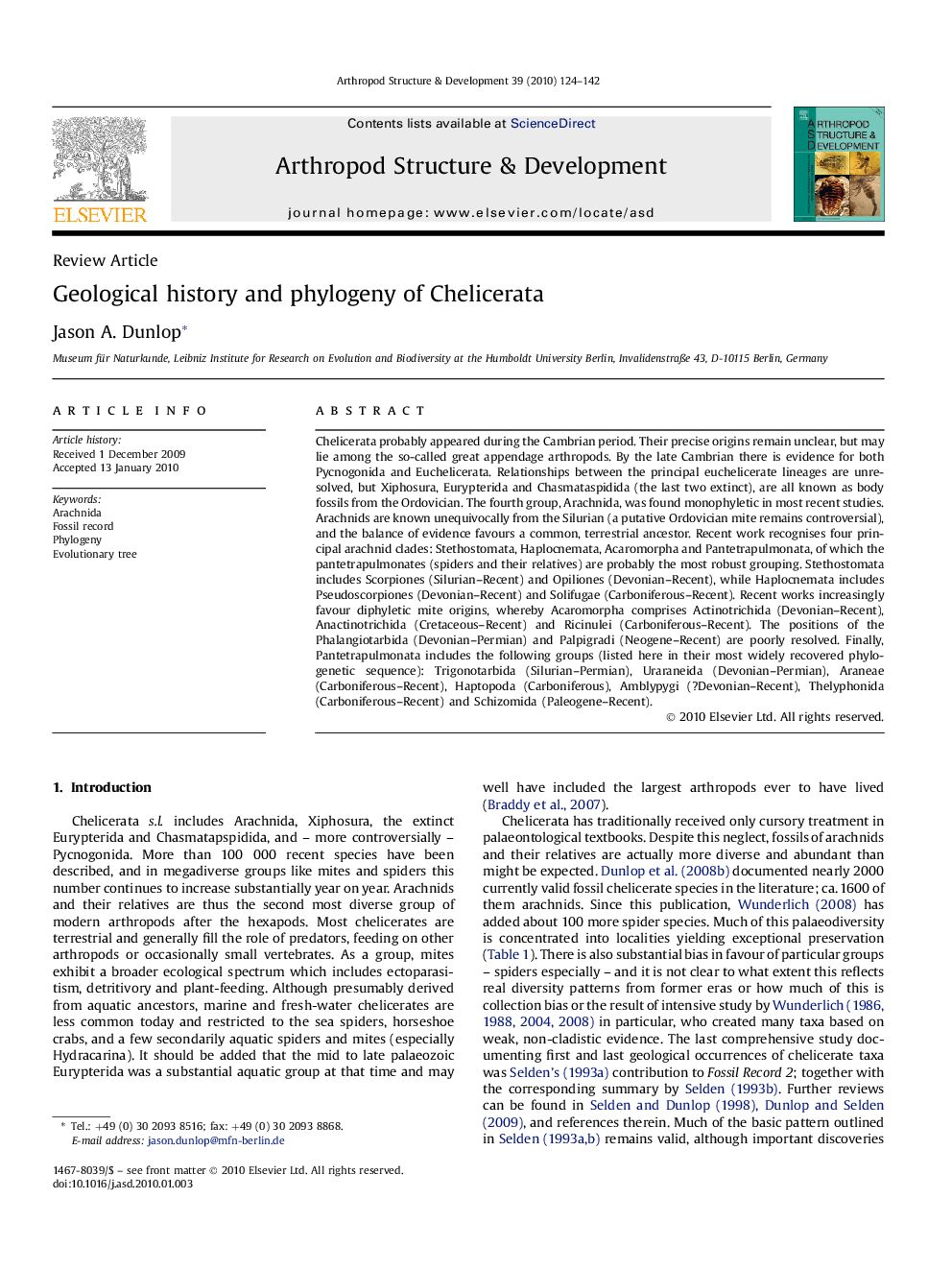| Article ID | Journal | Published Year | Pages | File Type |
|---|---|---|---|---|
| 2778804 | Arthropod Structure & Development | 2010 | 19 Pages |
Chelicerata probably appeared during the Cambrian period. Their precise origins remain unclear, but may lie among the so-called great appendage arthropods. By the late Cambrian there is evidence for both Pycnogonida and Euchelicerata. Relationships between the principal euchelicerate lineages are unresolved, but Xiphosura, Eurypterida and Chasmataspidida (the last two extinct), are all known as body fossils from the Ordovician. The fourth group, Arachnida, was found monophyletic in most recent studies. Arachnids are known unequivocally from the Silurian (a putative Ordovician mite remains controversial), and the balance of evidence favours a common, terrestrial ancestor. Recent work recognises four principal arachnid clades: Stethostomata, Haplocnemata, Acaromorpha and Pantetrapulmonata, of which the pantetrapulmonates (spiders and their relatives) are probably the most robust grouping. Stethostomata includes Scorpiones (Silurian–Recent) and Opiliones (Devonian–Recent), while Haplocnemata includes Pseudoscorpiones (Devonian–Recent) and Solifugae (Carboniferous–Recent). Recent works increasingly favour diphyletic mite origins, whereby Acaromorpha comprises Actinotrichida (Devonian–Recent), Anactinotrichida (Cretaceous–Recent) and Ricinulei (Carboniferous–Recent). The positions of the Phalangiotarbida (Devonian–Permian) and Palpigradi (Neogene–Recent) are poorly resolved. Finally, Pantetrapulmonata includes the following groups (listed here in their most widely recovered phylogenetic sequence): Trigonotarbida (Silurian–Permian), Uraraneida (Devonian–Permian), Araneae (Carboniferous–Recent), Haptopoda (Carboniferous), Amblypygi (?Devonian–Recent), Thelyphonida (Carboniferous–Recent) and Schizomida (Paleogene–Recent).
